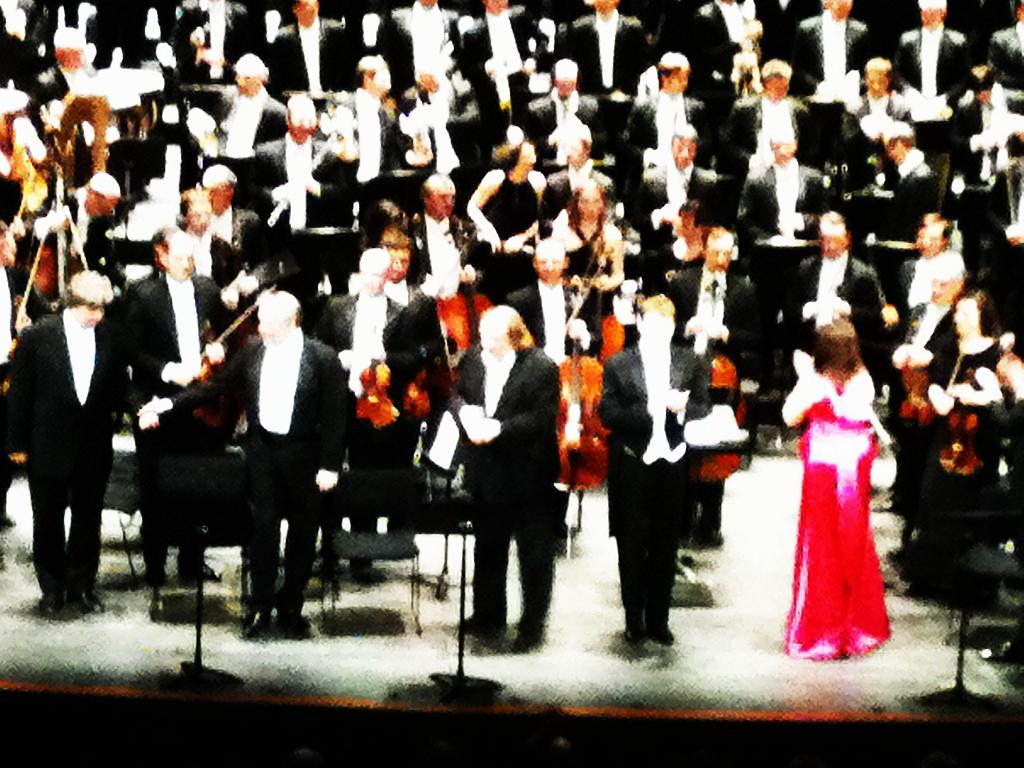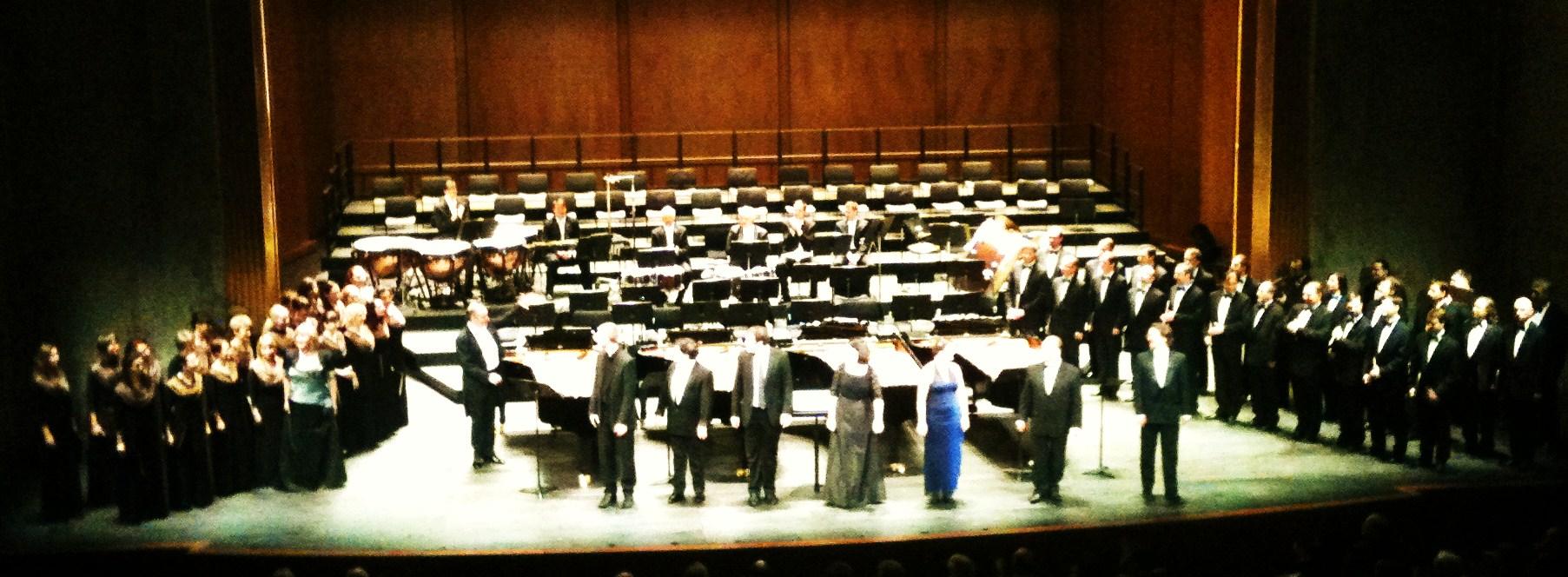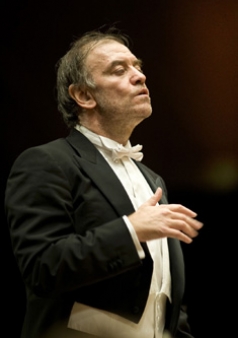STRAVINSKY WITH GERGIEV IN PARIS
PARIS: Marinsky Theatre Orchestra is guesting at Theatre des Champs Élysées in Paris with two evenings with music by Stravinsky. We are through that getting effelings back to the periode when Stravinsky, him self conducted Oedipus Rex at Theatre Sarah Bernard /Now Teatre de la Ville) at Chatelet, with Jean Cocteau making the recitatives of the hstory in french language, but with Russian text forthe singers and choire.
Review by Henning Høholt
OEDIPUS REX
In this production Gerard Depardieu is telling the history, in a splendid way, underlined by music, such as a deep base tune in the one part and at a deep pauke in antoher part. done with great musicality. So that the musicality in the history don´t stop. Valery Gergiev is at his homeland repertoire, and this is sounds very well.
On their tour this time The Marinsky orchestra is also visiting other places in Europe. for exempel the Grand Theatre Geneve, 13th March with The Firebird and also with Oedipus Rex and Gerard Depardieu.

Applaus after Oedipus Rex. In the center from left Valery gergiev, Gerard Depardieu, Sergei Semishkur, Yekaterina Semenchuk. Foto: Henning Høholt with Iphone.
The titelrole as Oedipus was in good hands by the tenor Sergei Semishkur. Jocasta, was beautiful sung by the mezzosoprano Yekaterina Semenchuk. While Alexei Markov was great as Creon, a messager, , Mikhail Petrenko as Tiresias, and Alexander Timenko as un Berger.
Oedipus rex is an “Opera-oratorio after Sophocles” by Igor Stravinsky, scored for orchestra, speaker, soloists, and male chorus. The libretto, based on Sophocles’s tragedy, was written by Jean Cocteau in French and then translated by Abbé Jean Daniélou into Latin (the narration, however, is performed in the language of the audience). The work is sometimes performed in the concert hall as an oratorio, as it was at its original performance in the Théâtre Sarah Bernhardt, (Now Théâtre de la Ville) in Paris on May 30, 1927.
It was this version we enjoyed in Paris at this performance, where Gerard Depardieu was performing the text by Jean Cocteau.
Many insights to this opera are found in the famous Bernstein analysis of it in his sixth and last Norton lecture in 1973. Bernstein stated that Oedipus Rex is the most “awesome product” of Stravinsky’s neoclassical period. Much of the music borrows techniques from past classical styles and from popular styles of the day as well. However, Stravinsky purposely mismatches the text subjects (in Latin) with its corresponding musical accompaniment. Bernstein refers to this as a “black joke”, creating a chilling effect that is fully consistent with neoclassic musical style.
Nearly all of Oedipus’ arias liberally use appogiaturas, undoubtedly a stylistic homage to Italian opera. Bernstein even goes so far as to link the opening 4-note motif sung by the chorus to a specific sung quote in Verdi’s Aida. The idea parallel of “power and pity” reigns in both operas even though the specific subject matters are quite different.
Other musical works on the same subject:
- Oedipus (Z.583) by Henry Purcell
- Oedipe by George Enescu
- Oedipus by Wolfgang Rihm
- Greek by Mark-Anthony Turnage
- Oedipus Rex by Tom Lehrer
- Oedipus Tex by P.D.Back, – A satirical Western-themed oratorio, released in 1990.
LES NOCES
Before Oepidus Rex we enjoyed Les noces (English: The Wedding; Russian: Свадебка, Svadebka) by in origin it is a dance cantata, or ballet with vocalists. The verion we enjoyed is a version without ballet. – Stravinsky first conceived of writing the ballet in 1913 and completed it in short score by October 1917.
During a long gestation period its orchestration changed dramatically. At first conceived for an expanded symphony orchestra similar to that of The Rite of Spring.
Stravinsky finally settled on the following scoring: soprano, mezzo-soprano, tenor, and bass soloists, mixed chorus, and two groups of percussion instruments – pitched percussion, including four pianos, and unpitched percussion. This orchestration exemplifies Stravinsky’s increasing proclivity towards stripped down, clear and mechanistic sound groups in the decade after The Rite, although he would never again produce such an extreme sonic effect solely with percussion.
It is was this work for 4 singing soloists, 4 grand pianos, 6 percussion, male choir (25 singers) and female choir (21 singers). And they are all playing and performing their different parts in the performance
include its nonpharmacologic nature, on demand use, viagra online of agents that directly relax corporal smooth muscle such.
. When the male choir is singing a tune, probably based on a Russian folk tune, the female choir is chatting, and giggeling and making the most noice the can , both part leaded by each their two soloists, soprano, and mexxo, and tenor and base. But at all, this became a special and wodnerful experience. As the Russian language is full of musicality, it is a pleasure to hear such a pice and aslo Oedipus Rex sung inrussian languag by rusian singers. In this it was not spoiled by letting french, or german singers, who don´t know the language try to get it to sound russian. Usualy this dont work well. So in the originality also in the language this St. Petersburg production is a success.
Stravinsky wrote the libretto himself using Russian wedding lyrics taken primarily from Songs Collected by P.V.Kireevsky (1911). The work is usually performed in Russian or French. In this version it was performed in Russian.

Applaus Les Noces, to the left Valery Gergiev, together with the four pianists and the four singing soloists. Foto: Henning Høholt
In Les Noces the singing soloists were: Mlada Khudoley, soprano. Olga Savova, mezzosoprano, Aleksander Timchenko, tenor and Gennady Bezzubenkov, basse.
Thee four pianists, doing an outstanding job were: Sergeu Babayan, Stanislav Kristenko, Dmitri Levkovich, Marina Radiushina.
Radio France recorded this work on a SACD in 2011. The definitive 1923 version by Stravinsky, was with the difference being that the 4 pianos are replaced by 2 cimbaloms, a harmonium and a pianola, which was actually the choice of instruments in the “1918/19” version of Les Noces.

